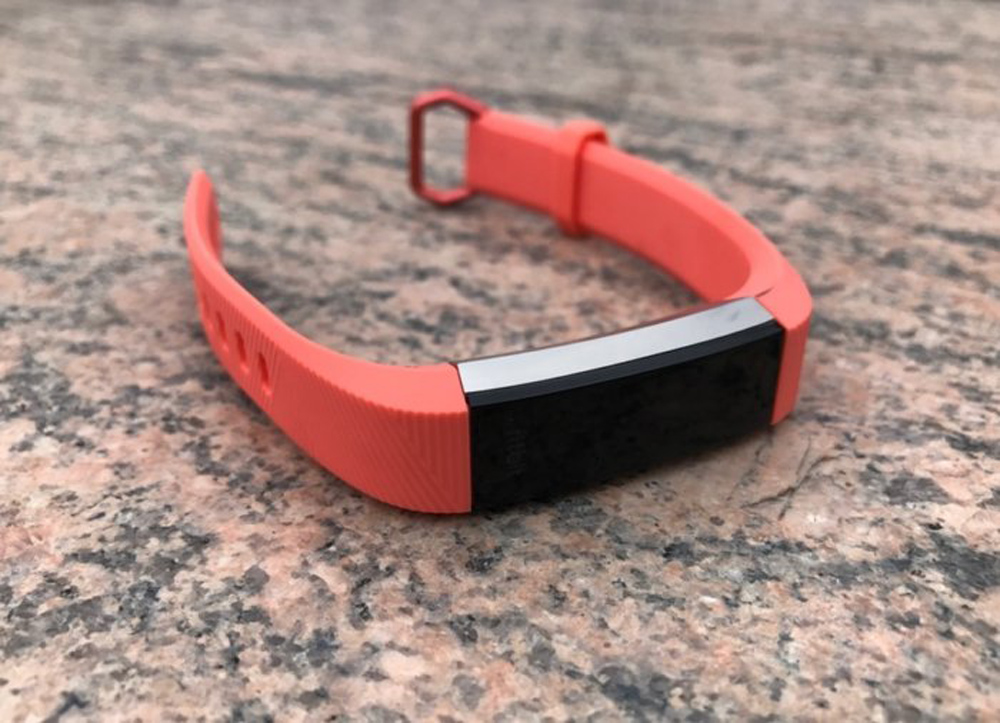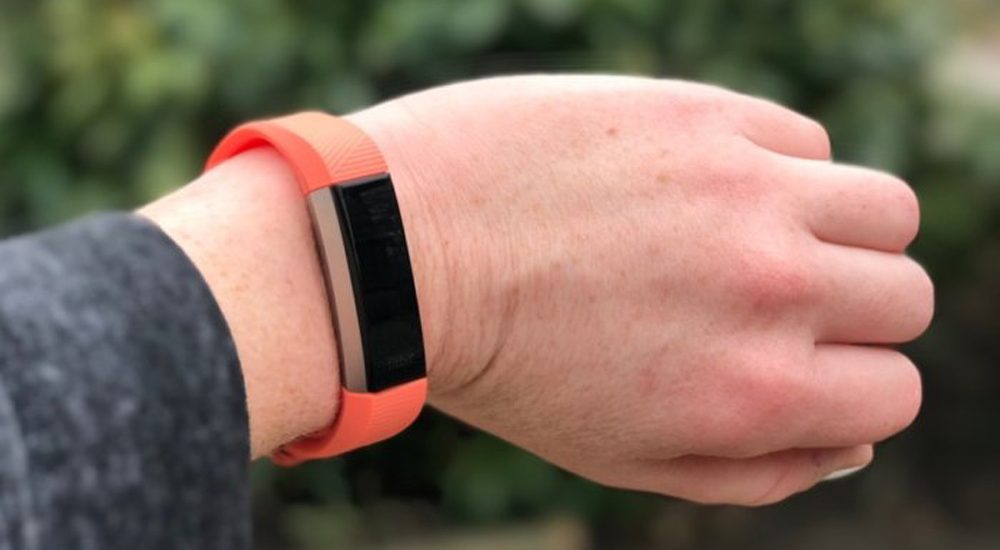Powerful sleep-tracking, 7-day battery life, and a heart rate sensor make Fitbit’s latest fitness band practically perfect.
I’ve said it before and I’ll say it again: The best activity tracker is the one you’ll actually wear every day, otherwise there’s no point in buying one at all. Fitbit’s new $150 Alta HR is the one most people would wear not just every day, but all night—and that’s worth every penny.
At a glance, the Alta HR looks identical to its predecessor, last year’s original Alta. It’s a slim bracelet with an OLED screen that wakes to show the time when you raise your wrist and responds to firm taps when you want to see your daily activity stats—calories burned, how many steps you’ve taken, and how many miles you’ve walked, etc.
But inside is an optical heart rate sensor. This changes everything.
Workout insights
Like the Alta (and a handful of other Fitbit devices), the Alta HR uses SmartTrack technology to automatically log your exercise. The new heart rate sensor makes that automatic tracking more powerful by recognizing and logging time spent in each heart rate zone (peak, cardio, or fat burn). You can see this in real-time on the display, but part of the appeal of the Alta HR is that you can just go about your day without ever looking at the device. Just sync the band with your phone at the end of each day or in the morning when you wake up and take a look at your dashboard in the Fitbit app.
With the heart rate sensor, the Alta HR is able to more accurately estimate calorie burn, although I use this information as a helpful guide more than a precise metric. I tracked the same workout simultaneously with the Alta HR and my Apple Watch Series 2, and while the average heart rate was about 10 beats per minute lower on the Alta HR than the Apple Watch, the Alta’s heart rate graph was more informative. The Apple Watch is more focused on plotting its GPS data than giving any heart rate insights. (There are third-party apps that do more with the watch’s heart rate data, but I’m comparing Fitbit’s app with the Apple Watch workout data shown in the Activity app on my iPhone.)
But with its limited battery life, the Apple Watch isn’t useful when it comes to tracking sleep. The Alta HR’s sleep insights take this fitness tracker to the next level.
Insomniacs, rejoice
I confess that I usually get 7 to 8 hours of sleep a night. If I’m tired enough, I can fall asleep in a noisy room with all the lights on. I am not the target demographic for the sleep analysis that many fitness trackers and apps promise. But Fitbit’s new sleep-tracking features seem like the most useful and accurate I’ve tried so far.
Fitbit uses the Alta’s continuous heart rate-monitoring to track your sleep cycles, so it can tell when you’re awake and what stage of sleep you’re in—light, deep, or REM—based on your heart rate. When you sync that data to the Fitbit app in the morning, your sleep dashboard helpfully graphs your sleep stages and diagrams the percentages of each type of sleep you get per night. Even better, you’ll see insights about what those percentages mean. I thought the fact that nearly half of my sleep is light was kind of a bad thing, but according to Fitbit, that percentage is just fine.

The app will also tell you how your daily activity affects your sleep, though it seems obvious that you’ll be more tired after a day with exercise than one without.
Sleep Stages isn’t exclusive to the Alta HR. Fitbit’s other heart rate-monitoring fitness trackers, the Blaze and Charge 2, will also get this feature in an app update.
I’ve only been testing the new sleep-tracking features for a week so they’re still pretty basic in terms of analysis, but Fitbit says the insights become more personalized the longer you wear the device.
Little tweaks make the difference
The Alta HR is just as slim as its predecessor, but there is one visible difference: new bands. Fitbit replaced the two-button clasp, which was often difficult to snap into place, with a more traditional buckle, and it’s a huge improvement. If you own the existing Alta, you can buy the new bands to swap in for the old ones, which is convenient for those who don’t want to upgrade or have no use for the heart rate sensor. A classic sport band is $30 and a new leather one is $60.

The Alta HR’s new interchangeable bands have a redesigned clasp.

Fitbit also stretched the next-generation Alta’s battery life from five days to seven days, so you can get up to a week of continuous wear on a single charge. This makes a big difference.
The Alta HR also carries over the bedtime reminders, reminders to move, silent vibrating alarms, and notifications for phone calls and text messages that the original Alta had, all of which are useful features I use constantly.
The bottom line

If you need a specialized fitness tracker for running, biking, or swimming, the Alta HR isn’t the best fit. It doesn’t have built-in GPS, or even the connected GPS that Fitbit’s Charge 2 offers to calculate and map your mileage courtesy of your smartphone. It would be nice if the Alta HR could tell me how far I run each day and not just how many minutes I’ve exercised.
But as a stylish, wearable activity and sleep tracker, the Alta HR checks every box: week-long battery life, sleep-tracking insights, functional and fashionable design, and a useful app that recommends other workouts based on the exercise you’ve already done that week. For the average person, this is the perfect fitness tracker.
Fitbit just made the slimmest fitness band with continuous heart rate monitoring. With expanded sleep features and week-long battery life, it’s a near-perfect activity tracker.
Pros
- Up to 7 days of battery life on a single charge
- Insightful sleep-tracking features
- Automatic exercise tracking now includes heart rate zones
Cons
- Lack of built-in or smartphone-connected GPS
Sоurсе: pcworld.com




































